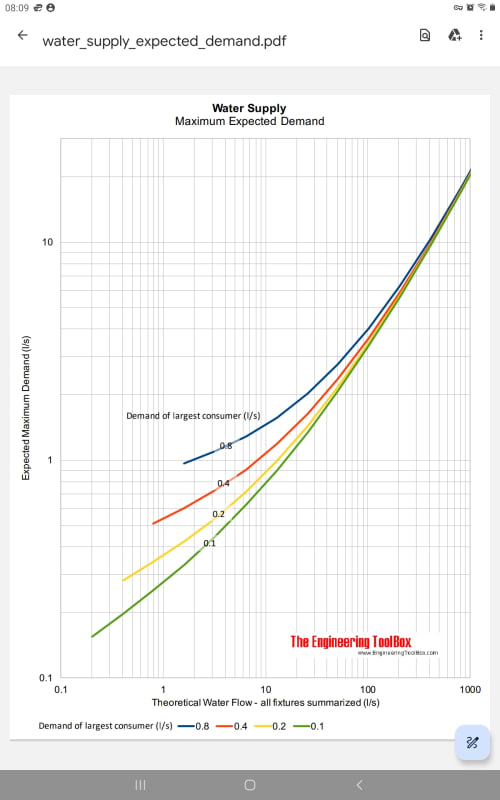Steven Reed P.E.
Civil/Environmental
This is a fairly typical task, but I can't find any good answers. I'm using the standard UPC tables 610.3 and 610.4 to determine required domestic water service and meter sizes. Those are sized based on WSFU's because it assumes some percentage of them are actually being utilized at a given time. We also have to connect an irrigation line, which runs one zone at a time with a known flow in GPM. In order to size the common line to both, I'm effectively adding WSFU and GPM to check velocity and pressure loss. The issue is I don't know how to convert GPM to WSFU or vice versa, because I don't know the assumed number of fixtures on at a time. There are conversions I can find online, but they seem to be limited to tank or non-tank toilets, rather than all of the fixtures. I can of course just assume that we have a reasonable velocity in the pipe and back-calculate the GPM from the WSFU, but I don't like to make those types of assumptions without knowing for sure how the calculation was done.
Does anyone have any idea how to best get combine these flows and size the common line?
Thanks,
Does anyone have any idea how to best get combine these flows and size the common line?
Thanks,

